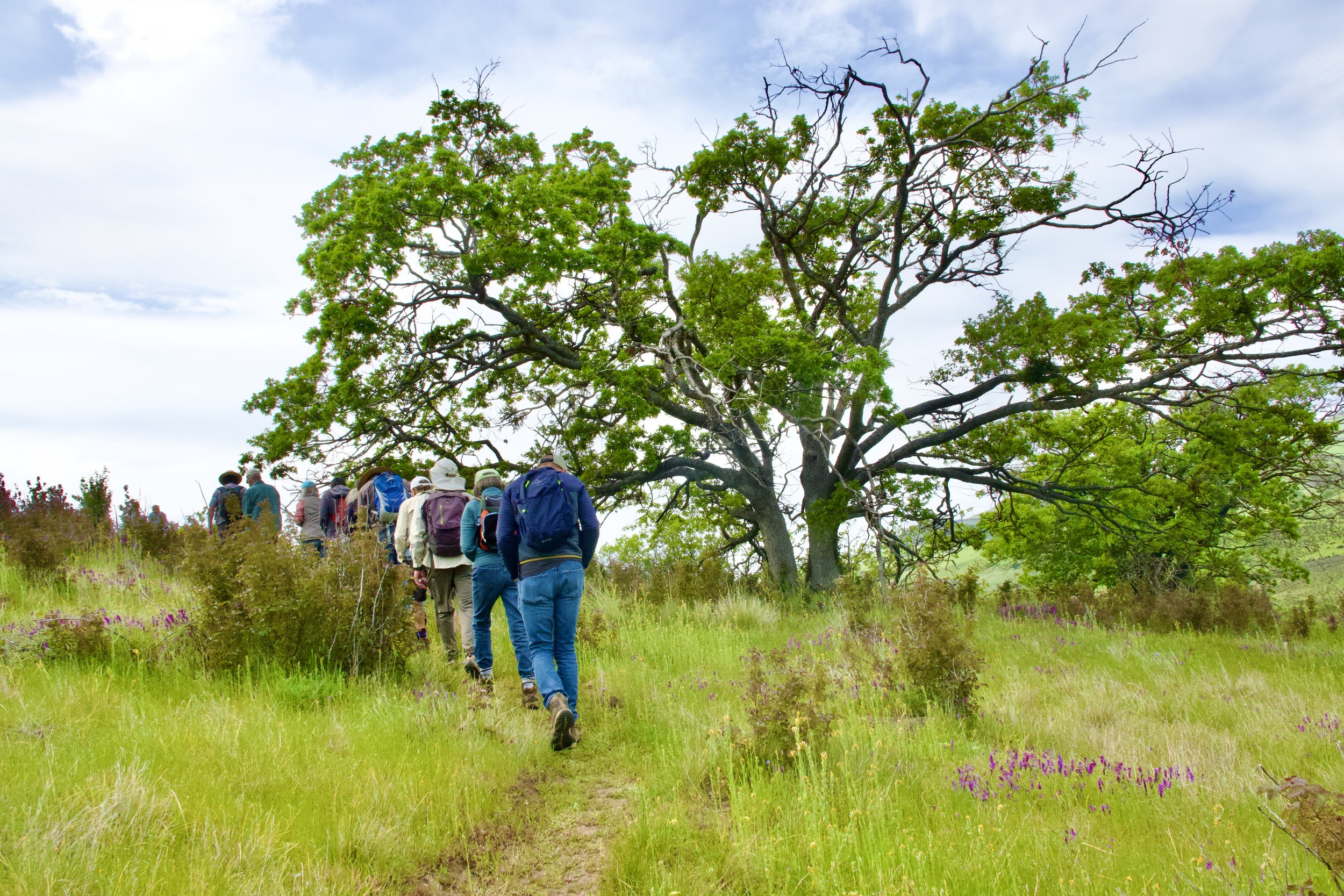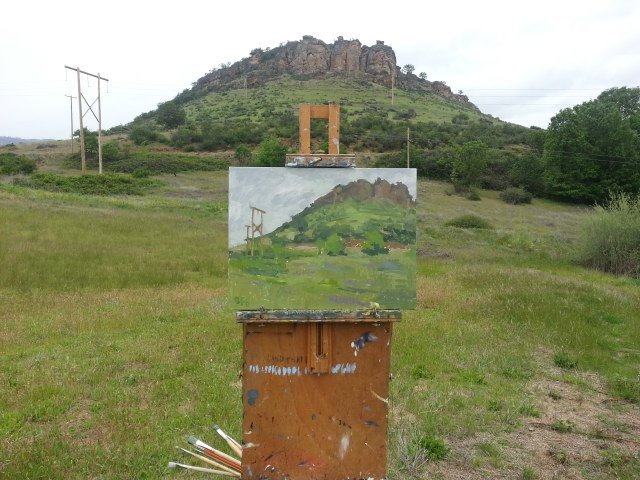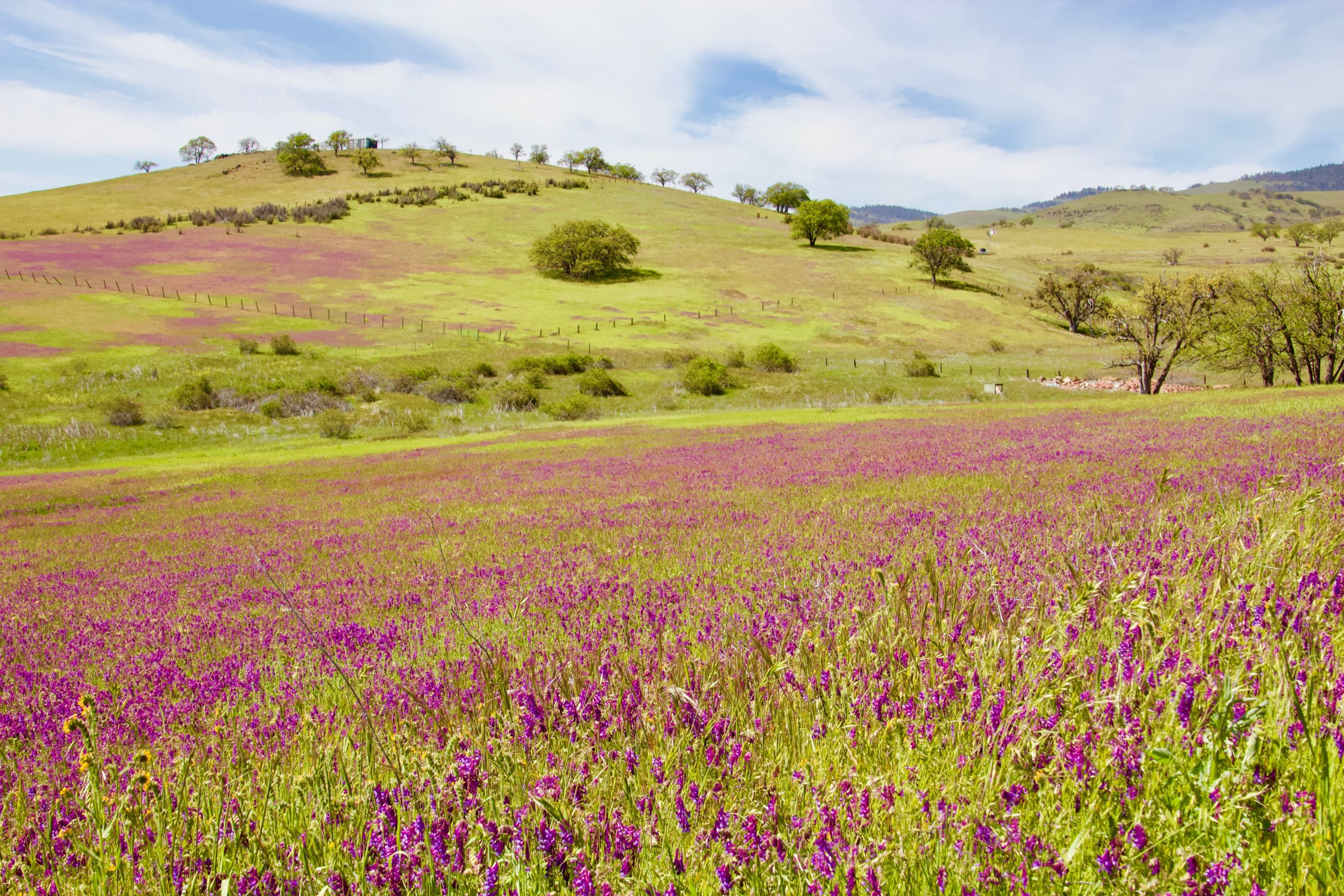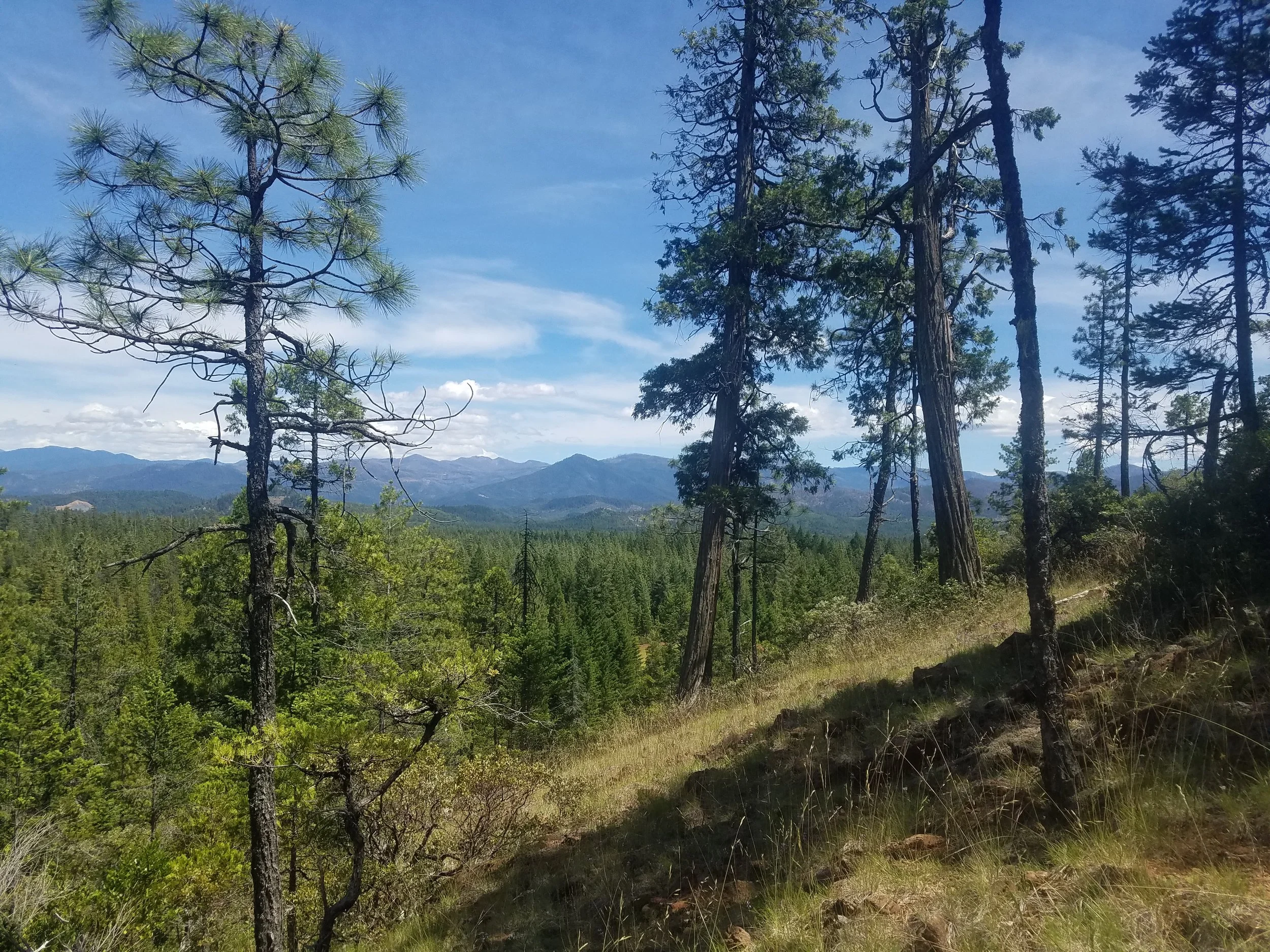By Kristi Mergenthaler, Stewardship Director, Southern Oregon Land Conservancy
She was last seen foraging on lupine and Siskiyou mint in a wet meadow on Mt. Ashland in 2006. She was exquisitely garbed in furry black, yellow, and white and observed carrying orange pollen baskets. The Franklin’s bumble bee was once common in northwest California and southwest Oregon, but now may be extinct. The rapid decline of honeybees and monarch butterflies is widely reported by the media, but populations of many other pollinators are also declining including native bees. Sadly, about one-third of bumble bee species may be threatened or critically endangered.
Franklin's bumble bee. Photo by Peter C. Schroeder.
Why should we care about bumble bees? If you love mountain wildflowers and the birds that eat their seeds, you should care. If you like to eat tomatoes, peppers and blueberries, you should care. Eight percent of the world’s flowering plants depend solely on buzz pollination – a technique bumbles use to obtain pollen from partially closed flowers, like a monkshood flower; they buzz in the note of C against the petals to release pollen. Imagine bumble music in the frequency of an electric toothbrush, and then, a rain of pollen.
Yellow-faced bumble bee pollinating a willow tree. Photo by Frank Lospalluto.
Male bumble bees do not live in the all-female colonies and often sleep alone in flowers. Imagine never having the chance to peer into a flower and be delighted by a sleeping bumble.
The threats to bumble bees are overwhelming and include the usual suspects: habitat destruction and degradation, overuse of pesticides, conventional monoculture agriculture, the loss of hedgerows and un-mowed places, over-grazing, and even pathogens originating from the commercial bumble bee industry.
Well “Hope’ is the thing with feathers as Emily Dickinson wrote in a poem AND hope is also furry small buzzing bodies. We all can help the bumble bee. Here’s how:
- Continue to support land conservation and restoration and promote smart development that reduces and mitigates for further habitat fragmentation.
- Support organic farms, farms that use integrated pest management, and farmers that plant or retain pollinator habitat. Thank your farmer for promoting pollinator health.
- Control noxious invasive weeds that threaten natural areas and reduce flowering plant biodiversity.
- Reduce or halt the use of insecticides, especially for aesthetic purposes.
- Be a citizen scientist and participate in Bumble Bee Watch: bumblebeewatch.org/.
- Ask plant nurseries and retailers to not sell plants treated with neonicotinoids, a persistent insecticide especially toxic to pollinators. Buy insecticide-free flowers from local nurseries.
- And lastly, plant lots of flowers, preferably native plants arranged in clumps of individual species. The City of Portland published Garden Smart as a guide to alternative choices to common invasive garden plants to help inspire homeowners in their gardening plans.
Choose flowers that bloom from early spring to late summer such as early flowering shrubs like Oregon-grape, white-leaf manzanita, and flowering current for the hungry queen bumble bees emerging from hibernation. Add late-flowering plants like aster, sagebrush, rabbitbrush and goldenrod. Include some bunchgrasses which provide overwintering sites for solo queens. And if possible, leave bare patches, brush piles and unmaintained areas for overwintering and nesting sites. Rip up a part of your lawn and plant more drought-tolerant flowers and try to be tolerant of lawn weeds like dandelion and clover. If you can, also plant milkweed for monarchs and bees. And join us in hoping for a report of a Franklin’s bumble bee sighting in the near future.
California Bumble Bee with jumping spider and beetle. Photo taken at the City of Ashland Imperatrice property by Pepper Trail














